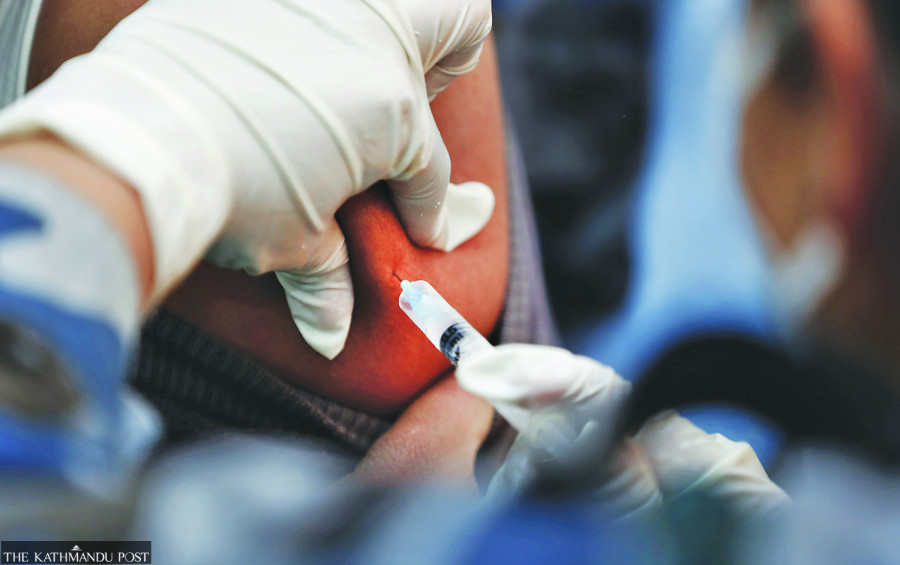Health
Government in campaign to boost vaccination rate
Report shows that at least four percent of the children aged between 12 and 23 months have received no immunisation.
Post Report
In a bid to increase the coverage of childhood vaccines on the regular immunisation list, the Ministry of Health and Population is launching a month-long nationwide campaign on Thursday.
The ministry's move comes amid a report showing that thousands of children countrywide aged between 12 and 23 months are yet to be vaccinated.
“We have decided to launch a month-long nationwide campaign of immunisation for the big catch-up,” said Dr Abhiyan Gautam, chief of the Immunisation Section at the Family Welfare Division under the Department of Health Services. “Big catch-up means that the focus of the campaign will be on inoculating the maximum number of children under five, who have either missed scheduled doses or have not completed a vaccine series.”
Childhood immunisation is the number one priority of the government, under which 13 types of vaccines are given against a range of diseases, including measles-rubella, pneumonia, tuberculosis, diphtheria, pertussis, tetanus, hepatitis B, rotavirus, Japanese encephalitis and typhoid under the regular immunisation programme, free of cost.
Regular immunisation is one of the most successful programmes in Nepal, with a high coverage rate. The country has demonstrated remarkable progress in reducing the under-five mortality rate and the regular immunisation programme is credited with that.
However, a recent report of the Nepal Demographic and Health Survey-2022 carried out by the Ministry of Health and Population showed that at least four percent of the children aged between 12 and 23 months have received no vaccine at all. This figure was one percent in 2016.
Officials blamed the Covid pandemic and several other factors for the rapid decline in routine vaccination. Thousands of children had missed regular immunisation during the first, second and third waves of the pandemic.
Authorities also enforced restrictions on public movement and the movement of public transport vehicles to prevent the spread of the virus. People had shunned the services due to fears of their children contracting the virus.
Other reasons include floating populations, scattered slums, lack of awareness and poor access to health workers for the low vaccine coverage rate, experts say.
“Immunisation is the most cost-effective, most-powerful and efficient way to control and eliminate vaccine-preventable diseases that contribute to childhood illnesses and deaths,” said Dr Shyam Raj Upreti, former director general of the Department of Health Services. “Studies show that it (vaccination) is the most successful programme of public health worldwide, after safe drinking water, to lessen morbidity and the mortality rates. Nepal itself has lessened many deaths from the programme.”
Health ministry officials said that they have asked the agencies concerned to update micro-plannings to increase the vaccine coverage. They have also requested the school administration to make sure that children seeking new admission have received all routine vaccines and have initiated an awareness drive on the importance of vaccination.
“We have also requested officials to do micro-planning, keeping in mind the areas and communities having low coverage rate of routine vaccines,” said Gautam, the chief of the Immunisation Section.
Several districts of the country recently witnessed massive measles outbreaks. A low vaccine coverage rate is being blamed for the outbreaks. Officials say most measles outbreaks have been reported among marginalised communities and religious minorities—Muslims and Catholics as well as other backward groups—where the level of awareness for regular immunisation is low.




 11.74°C Kathmandu
11.74°C Kathmandu













